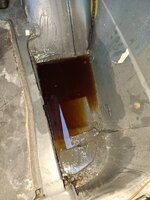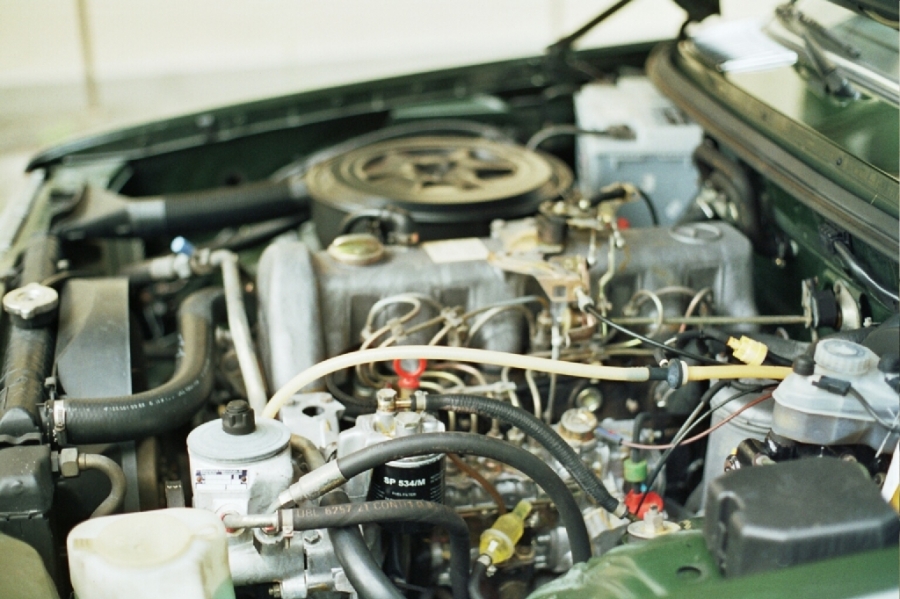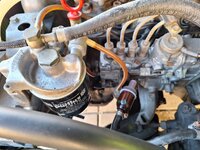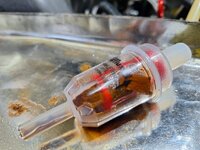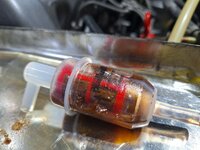This is a diesel pre-filter on a 240d (w123) after only about 850km/530 miles.
This is the debris that was left on the tray after I tried to drain the pre-filter:
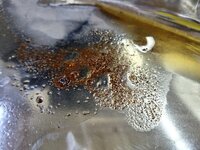
There was still plenty of stuff in the pre-filter that refused to leave.
I have save the main filter and will cut it open after it has drained completely. You will, of course, not be spared the pictures.
But how how does stuff like this happen? This is the first time I have ever seen this funny little thing do anything.
I resurrected a 240d (w123) after sitting still for at least 15 years. Tank was full to the brim, and there was not the slightest leak anywhere, so we were optimistic that it might have survided. A vain hope, as we now know.
All fluids (except fuel... fuel is expensive here in Germany!) have been changed, as well as all filters. (There also was "some" body and paint work necessary as well as some chassis components that were shot, but that would be another topic).
After 500km, the car slowly started to lose power. At the time of changing the filters at ~850km, it was barely able to keep up with city traffic (50km/h) - and only on a flat road. Hills slowed her down to about 30km/h.
With both the pre-filter and the main filter changed, she is now back up to her top speed of 155km/h again!
Poor car will definitely get a "new" tank - a friend of mine already secured one. As this tank is a couple hundred kilometres away, the question is: how many filter changes will I need to get there?
This is the debris that was left on the tray after I tried to drain the pre-filter:

There was still plenty of stuff in the pre-filter that refused to leave.
I have save the main filter and will cut it open after it has drained completely. You will, of course, not be spared the pictures.
But how how does stuff like this happen? This is the first time I have ever seen this funny little thing do anything.
I resurrected a 240d (w123) after sitting still for at least 15 years. Tank was full to the brim, and there was not the slightest leak anywhere, so we were optimistic that it might have survided. A vain hope, as we now know.
All fluids (except fuel... fuel is expensive here in Germany!) have been changed, as well as all filters. (There also was "some" body and paint work necessary as well as some chassis components that were shot, but that would be another topic).
After 500km, the car slowly started to lose power. At the time of changing the filters at ~850km, it was barely able to keep up with city traffic (50km/h) - and only on a flat road. Hills slowed her down to about 30km/h.
With both the pre-filter and the main filter changed, she is now back up to her top speed of 155km/h again!
Poor car will definitely get a "new" tank - a friend of mine already secured one. As this tank is a couple hundred kilometres away, the question is: how many filter changes will I need to get there?

